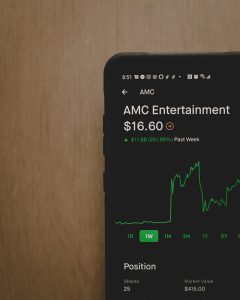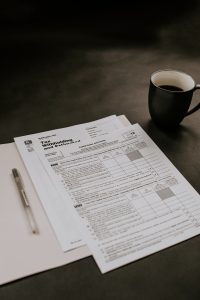The foreign exchange market, commonly known as forex, is a decentralized market where currencies are traded globally. Forex charts offer traders a visual representation of currency pairs and their price movements over a specific period. One of the essential tools to understand when using forex charts is the long/short position tool. This article will explain what a long/short position is and how to use it on forex charts.
What is a Long/Short position?
A long position is when a trader buys a currency pair with the expectation that the price will rise. On the other hand, a short position is when a trader sells a currency pair with the expectation that the price will fall. A trader can take a long or short position in any market, including forex. The long/short position tool is used to determine the direction of the market trend and the entry and exit points for a trade.
How to use the Long/Short Position Tool on Forex Charts?
Step 1: Choose a Forex Chart
The first step in using the long/short position tool is to choose a forex chart. Forex charts are available on trading platforms, and traders can choose from different timeframes, including minutes, hours, days, and weeks. It is essential to select a timeframe that aligns with the trader’s trading strategy.
Step 2: Analyze the Chart
The second step is to analyze the chart to determine the market trend. The market trend is the direction in which the price of a currency pair is moving. In forex trading, there are three types of trends: uptrend, downtrend, and sideways trend.
An uptrend is when the market is moving upwards, and a series of higher highs and higher lows are formed. A downtrend is when the market is moving downwards, and a series of lower highs and lower lows are formed. A sideways trend is when the market is moving in a range, and no clear direction is formed.
To determine the trend, a trader can use technical indicators such as moving averages, trend lines, and support and resistance levels. Moving averages are used to smooth out price fluctuations and identify the direction of the trend. Trend lines are used to connect the highs or lows of the price and identify the trend direction. Support and resistance levels are used to identify areas where the price is likely to bounce off.
Step 3: Identify the Entry and Exit Points
The third step is to identify the entry and exit points for the trade. The entry point is the price at which the trader enters the market, while the exit point is the price at which the trader exits the market. Traders can use the long/short position tool to identify the entry and exit points based on the market trend.
In an uptrend, traders take a long position, and the entry point is at the support level. The stop-loss is placed below the support level, and the take profit is placed at the resistance level.
In a downtrend, traders take a short position, and the entry point is at the resistance level. The stop-loss is placed above the resistance level, and the take profit is placed at the support level.
In a sideways trend, traders can take both long and short positions. The entry and exit points are identified based on the support and resistance levels.
Step 4: Manage the Trade
The fourth step is to manage the trade. Managing the trade involves monitoring the price movements and adjusting the stop-loss and take profit levels accordingly. Traders can also use trailing stops to lock in profits as the price moves in their favor.
Conclusion
The long/short position tool is a critical tool in forex trading as it helps traders to identify the market trend and the entry and exit points for a trade. To use the long/short position tool effectively, traders need to analyze the forex chart, identify the trend, and determine the entry and exit points based on the market trend. Traders should also manage the trade by monitoring the price movements and adjusting the stop-loss and take profit levels accordingly.





